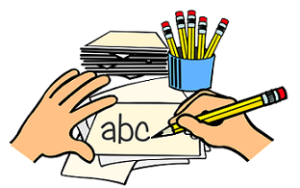Teaching Handwriting, Post
- On Jul, 17, 2022
- Tutoring Primary
- Blog
Teaching Handwriting
Teaching Handwriting can be straight-forward. It’s a matter of learning a few phrases for regular repetition and a few others. It’s like learning to drive. Once you know what you’re doing, it’s easy and automatic.
Links: This Page will be informative: Early Primary School, Page
An early literacy lesson pack: “His Name is Nip” Literacy Grade 1
Another connected post: How to Teach Hand-Printing, Post
Follow these stages over a year:
- Work on the small letters first, then the capital letters. Many books and classroom methods teach the two together. Especially for any child finding this difficult, concentrate on one at a time. The suggestion here is to do small letters first for all early learners.

- Starting with the lower case, work on letters with only straight lines.
- Then work on letters with round shapes, followed by letters with stems and tails. A stem is the stick that goes up, and the tail is the part that hangs down. A ‘d’ has a stem and a ‘g’ has a tail.
- Do the same with capitals – straight lines such as capital ‘L’ and follow up with letters with rounded parts.
- Say to your child, “All capital letters stand on the line,” meaning none of them has a tail.
- Regarding small letters, say “The body of the letter sits on the line.” Explain that the body of the letter is the round part.
- Ask the child to write small letters such as a e u o p q etc. Then ask the student to colour in the body of the letter. This reinforces what the body is and where it sits.
When you encounter a problem
- Avoid overloading the child. You will know when you can introduce the next step.
- If a child feels frustrated when writing then tell them it’s like drawing and it’s a form of art.
- Write some letters in large. Ask your child to copy them and then see if they can turn each letter into a picture.
- To strengthen a child’s hand muscles, you could set up a potato peeling activity at the kitchen bench on a regular basis. There are other activities you can invent yourself, such as threading buttons.
The word ‘loop’ can be a problem.
Children ‘loop’ into the m and n and then draw a loop on the way out of letters. The loop has become big in children’s handwriting. It is not part of the letter anyway. This makes the children’s letters too wide. Ask your student to begin the letter at the line and when finished the letter, say tick. And children love to do ticks!
Fair dealing/use claimed on illustrations.